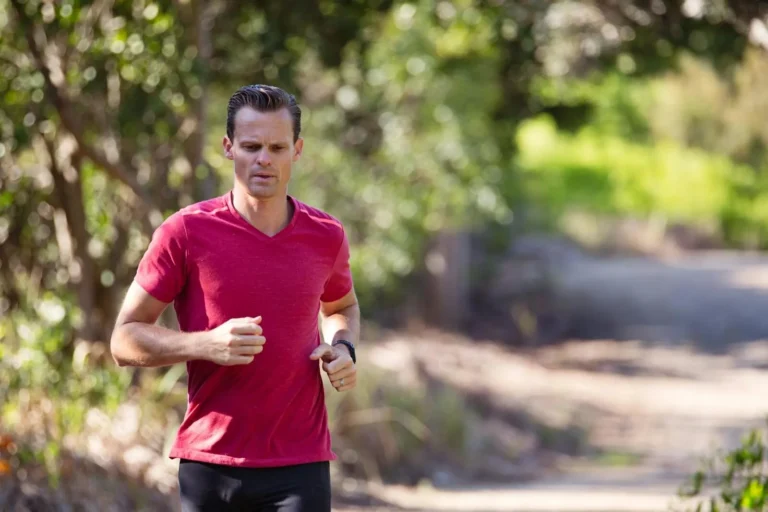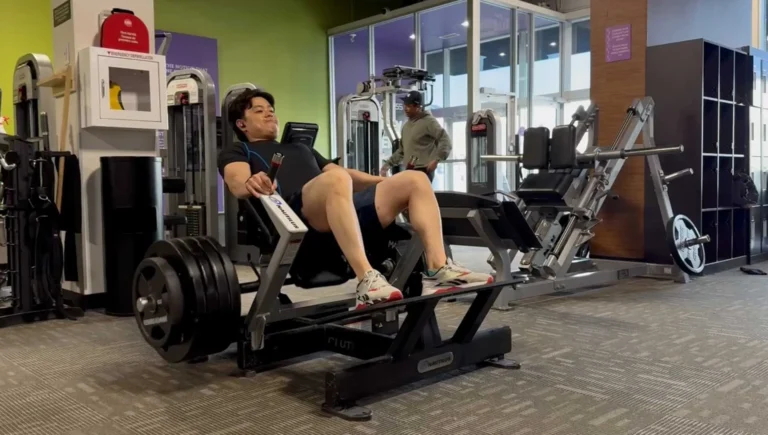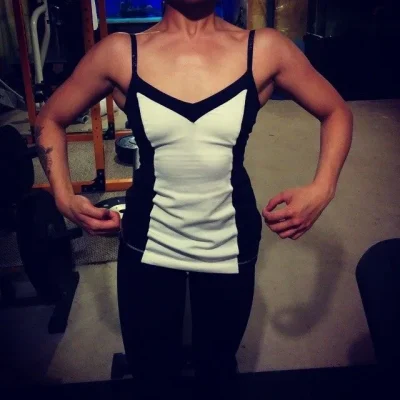Injury can feel like a setback, but it doesn’t have to derail your fitness journey. Engaging in appropriate recovery workouts is important for promoting healing and rebuilding strength safely. By focusing on low-impact exercises and listening to your body’s signals, you can effectively manage pain while staying active. This guide will provide you with effective techniques and tips to navigate your recovery process, ensuring that you rebuild your fitness foundation without risking further injury.
Key Takeaways:
- Injury recovery workouts should be tailored to individual needs, focusing on low-impact exercises that promote healing without risking further injury.
- Incorporating flexibility and strength training can enhance recovery, improve mobility, and prevent future injuries.
- Consulting with healthcare professionals or certified trainers can ensure that workout routines are safe and effective throughout the recovery process.
The Biomechanics of Injury Recovery
Understanding Musculoskeletal Healing
Musculoskeletal healing is a complex process that involves the regeneration of tissues such as muscles, tendons, and ligaments. Bone healing alone can take anywhere from six weeks to several months, influenced by factors like age, nutrition, and the nature of the injury. Understanding this process allows you to tailor your recovery plan effectively, focusing on gradual loading and rehabilitation exercises that align with each healing phase.
The Role of Proper Alignment and Movement
Proper alignment and movement patterns are critical for effective injury recovery. Misalignments can lead to compensatory patterns that prolong dysfunction or result in further injury. By focusing on realigning your body and restoring functional movement, you enhance your recovery process, reduce pain, and promote healthy biomechanics.
To maintain your alignment and movement during recovery, evaluate your posture and movement mechanics. For instance, exercises like bridges and planks can help strengthen your core, which is vital for supporting the spine and pelvis. Incorporate mobility assessments to identify any areas of restriction or instability, enabling targeted interventions. Adopting techniques such as dynamic stretching and proprioceptive training can significantly improve your movement efficiency, allowing your body to perform optimally and decrease the risk of re-injury.
Customized Workouts for Specific Injuries
Creating customized workouts tailored to your specific injury is important for a safe recovery. Each injury requires a unique approach, which can help minimize pain and prevent further damage. Developing a workout plan that considers your current fitness level, injury type, and rehabilitation goals maximizes your chances of returning to full strength quickly and safely.
Tailoring Programs for Common Injuries
For common injuries like ankle sprains or knee ligament tears, tailoring your workout program includes including gentle stretches and low-impact activities. For instance, after an ankle sprain, focusing on stability exercises can help restore function. Similarly, incorporating strength-building movements like quad sets or leg raises post-knee injury enhances recovery while ensuring you avoid aggravating your condition.
Cross-Training Strategies to Enhance Recovery
Incorporating cross-training into your recovery routine can significantly speed up your healing process. By integrating activities that do not strain your injury, such as swimming or cycling, you can maintain your cardiovascular fitness and strength without risking further injury. Attending specific classes like yoga or pilates can also enhance flexibility and strengthen supporting muscles, which plays a pivotal role in your recovery journey.
Effective cross-training strategies involve selecting exercises that engage different muscle groups while giving your injured area time to heal. For example, if you’re recovering from a shoulder injury, alternative workouts like stationary cycling can help maintain cardiovascular health without adding strain. Furthermore, utilizing hydrotherapy for rehabilitation allows for a full range of motion in a low-impact environment, promoting healing through buoyancy. Always assess your comfort level and consult with a healthcare professional before starting any new activity, ensuring a balanced approach to recovery.
Evidence-Based Techniques for Safe Progression
Safe progression during injury recovery involves implementing evidence-based techniques that allow for gradual adjustments in your workout routine. Utilizing assessments, you can determine your current physical capabilities and track improvements over time. Focus on the principles of specificity, progressive overload, and recovery, ensuring that every increase in intensity or volume is supported by your body’s response. This approach not only enhances your recovery rate but also minimizes the risk of re-injury, equipping you with strategies for sustainable fitness gains.
Gradual Load Increase: Finding the Balance
Finding the right balance in load increase is imperative for your recovery. Start with lighter weights or lower resistance, then gradually incorporate additional load based on your comfort and ability to maintain proper form. This gradual exposure helps to build strength without overloading your injured area, allowing your body to adapt and grow stronger. Aim for a 10-15% increase in load once you feel stable and confident in your movements.
Incorporating Mobility and Stability Drills
Incorporating mobility and stability drills into your routine enhances joint function and reduces the likelihood of re-injury. These drills focus on improving your range of motion and enhancing muscle coordination, which is vital during the recovery phase. For instance, exercises like hip circles, ankle mobility stretches, and stability ball rollouts can be particularly beneficial. Performing these drills 2-3 times a week can significantly enhance your overall biomechanics and prepare you for increases in load safely, ultimately paving the way for a more effective fitness journey.
Dynamic exercises, such as single-leg balance holds or lunges with a twist, engage your stabilizing muscles while promoting functional movement patterns. By incorporating mobility exercises like cat-cow stretches or shoulder dislocations, you enhance your flexibility and range of motion, which directly contributes to pain-free movement. Additionally, maintaining consistency in your mobility work can vastly improve overall posture, leading to better outcomes as you progress through your rehabilitation and return to more intense training.
Emotional and Psychological Aspects of Recovery
Your emotional and psychological state plays a significant role in the recovery process. Navigating through feelings of frustration, anxiety, and even sadness is common when dealing with an injury. Accepting these emotions as part of the journey is necessary for achieving a balanced mindset, allowing you to focus on your progression rather than the setbacks. Positive self-talk and practices like mindfulness can help manage these emotions, ultimately fostering resilience as you move forward in your rehabilitation.
The Impact of Mindset on Physical Rehabilitation
A positive mindset can significantly enhance your physical rehabilitation experience. Those who maintain an optimistic outlook tend to recover faster and experience less perceived pain during workouts. For example, studies show that patients with a growth mindset are more likely to push through challenges rather than succumb to feelings of defeat. Emphasizing self-efficacy and focusing on small achievements fosters an empowering environment to impulsively tackle your rehabilitation goals.
Strategies for Staying Motivated Through Setbacks
During recovery, you may encounter various setbacks that can test your motivation. To effectively navigate these hurdles, incorporating specific strategies can keep your spirits high and your focus sharp. Setting realistic, incremental goals breaks down the larger recovery process into manageable steps, allowing you to celebrate small victories. Additionally, connecting with a support network, such as friends, family, or even online communities, can provide encouragement and a sense of accountability to push through those challenging moments.
Finding motivation during setbacks often requires a multi-faceted approach. Consider journaling your thoughts and feelings to identify triggers that affect your mood, or exploring visualization techniques to picture your success and reinforce your goals. Surround yourself with uplifting and like-minded individuals who can inspire you during tough times. Creating a structured routine makes it easier to commit to your workout plan, even when motivation is waning. By reinforcing your mindset with positivity, and keeping your focus on short-term objectives, you pave the way for achieving the long-term success you desire.
Long-Term Fitness Solutions Post-Recovery
Transitioning to long-term fitness solutions post-recovery is necessary for maintaining your hard-won progress. After regaining strength and mobility, your focus should shift toward sustainable practices that not only enhance your overall fitness but also fortify your body against future setbacks. Implementing consistent training schedules and progressive overload principles ensures that you continue to challenge your body effectively while nurturing recovery habits.
Building a Sustainable Fitness Routine
A sustainable fitness routine revolves around finding activities you enjoy and can commit to consistently. Incorporating a mix of strength training, cardio, and flexibility exercises keeps things engaging. Aim for a balanced approach by scheduling workouts throughout the week that fit seamlessly into your life. Monitoring your progress helps foster a sense of accomplishment and encourages adherence to your routine.
Preventing Future Injuries Through Education and Awareness
Educating yourself about proper form, exercise techniques, and the importance of recovery can significantly decrease your risk of future injuries. Awareness of your body’s signals, combined with understanding how to modify exercises according to your limits, empowers you to make informed decisions. Establishing this knowledge base creates a resilient fitness mindset that actively contributes to your long-term well-being.
Continuing education on biomechanics, body mechanics, and injury prevention strategies reinforces your understanding of fitness safety. Attending workshops, engaging with certified trainers, or utilizing online resources can enhance your knowledge base. For example, learning about the significance of dynamic stretching before workouts can prepare your muscles, while cool-down techniques help mitigate soreness post-exercise. Prioritizing this education not only enriches your fitness journey but also fosters a protective mindset, allowing you to navigate new challenges with confidence. Making informed choices empowers you to enjoy a fulfilling and injury-free fitness experience.
Conclusion
With these considerations, you can confidently approach your injury recovery workouts to ensure they are both safe and effective. Prioritizing proper techniques, listening to your body, and integrating gradual progressions into your routine will facilitate recovery while promoting overall fitness. Tailoring your workouts to accommodate your specific needs makes it easier for you to stay committed and motivated. By doing so, you empower yourself to regain strength and flexibility, ultimately leading to a healthier, more active lifestyle.
Q: What types of workouts are recommended for injury recovery?
A: For injury recovery, it is vital to focus on low-impact exercises that promote healing without putting additional strain on the injured area. Recommended workouts often include gentle stretching, strength training with light weights, water aerobics, and exercises that utilize resistance bands. Pilates and yoga can also be beneficial as they enhance flexibility and balance while minimizing the risk of further injury. Always consult a healthcare professional or a trained fitness coach before starting any new workout regimen during recovery.
Q: How can I modify my fitness routine to accommodate an injury?
A: Modifying your fitness routine is vital for effective injury recovery. Start by identifying exercises that do not aggravate your injury. For instance, if you’re dealing with a knee injury, activities such as swimming or cycling may be more suitable than running. Additionally, focus on strengthening other areas of your body that are not affected by the injury. Low-impact cardiovascular exercises can also be incorporated to maintain fitness levels. Consulting a physical therapist can provide tailored modifications specific to your condition, ensuring that you stay safe while staying active.
Q: When should I consult a professional during my injury recovery?
A: Consulting a professional is advisable at various stages of your injury recovery. If you experience persistent or worsening pain, delays in healing, or any new symptoms during exercise, it is vital to seek guidance from a healthcare provider. Additionally, before beginning any workout routine specifically designed for recovery, engaging with a physical therapist or sports medicine specialist can provide invaluable insights into safe practices. They can develop a personalized recovery plan that considers your specific injury, fitness level, and health goals, aiding in a safe return to activity.
















































